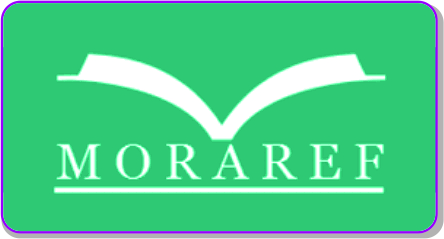Communication Strategies in Classroom Discussion of Graduate Students
DOI:
https://doi.org/10.30983/mj.v1i1.5126Abstract
Abstrak
Dalam berkomunikasi diperlukan beberapa strategi agar komunikasi tersebut dapat berjalan sesuai dengan yang diinginkan. Strategi tersebut dilakukan ketika si pembicara menemukan kesulitan dalam kosakata terutama ketika mereka berbicara bukan dalam bahasa asli mereka. Penelitian ini bertujuan untuk mengidentifikasi strategi komunikasi yang di pakai oleh mahasiwa Pasca UNP ketika mereka bertanya dan menjawab pertanyaan selama diskusi kelas dan juga mengekplorasi alasan dalam memakai strategi tersebut. Tiga kelas di pilih sebagai subjek penelitian dengan menggunakan teknik purposive sampling. Data diambil dari pengamatan kelas dan wawancara. Dari hasil pengamatan dan wawancara inilah diketahui bahwa Mahasiswa Pasca UNP Program Studi Bahasa Inggris dalam menjawab dan bertanya mengunakan semua jenis Strategi komunikasi.. Namun strategi yang paling banyak diaplikasikan mahasiswa baik ketika mempresentasikan dan ketika bertanya adalah strategi stalling dan  time gaining— filler dan gambits yang digunakan untuk mengambil kesempatan untuk berfikir sejenak dalam melanjutkan kalimat berikutnya. Pada umumnya baik dari pihak pemakalah dan penanya dalam menggunakan strategi komunikasi tersebut beralasan untuk menjaga komunikasi tetap berjalan lancar , berusahan untuk membuat pembicaraan lebih jelas dan untuk mengurangi kegugupan dan kecemasan.
Kata Kunci: Strategi Komunikasi, Tanya Jawab, Diskusi Kelas
Abstract
In communicating, several strategies are needed so that the communication can run as desired. The strategy is carried out when the speaker finds difficulties in vocabulary especially when they speak not in their native language. This study aims to identify the communication strategies used by Post-UNP students when they ask and answer questions during class discussions and also explore the reasons for using these strategies. Three classes were selected as research subjects using purposive sampling technique. Data were taken from class observations and interviews. From the results of these observations and interviews, it is known that Post-UNP Students of the English Study Program in answering and asking questions use all types of communication strategies. However, the strategies that are mostly applied by students both when presenting and when asking are stalling and time gaining strategies -filler and gambits- which are used to take the opportunity to think for a moment in continuing the next sentence. In general, both the presenter and the questioner use this communication strategy for reasons to keep the communication going smoothly, trying to make the conversation clearer and to reduce nervousness and anxiety.
Keywords: Communication Strategies, Question and Answer, Classroom Discussion
References
Arends, Richard I.1982 . Learning to Teach (5ed). New York: McGraw Hill.
Aliakbari, Mohammad and Nabi Karimi Allvar. 2009. Communication Strategies in the Written Medium: The Effect of Language Proficiency. Linguistics online 40,4/09.ISSN 1615 3014 . (http://www.linguistik-online, retrieved on July 2010)
Brown, H. Douglas. 2007. The principle of Language Teaching and Learning. New York: Pearson Education
Bialystok, E. 1983. “Some Factors in The Selection and Implementation of Communication Strategiesâ€. (p100-118) C. Faerch and G. Kasper (Eds), Srategies in interlanguage Communication (100-118) . London: Longman
Brett, Angela Gallagher. 2001. Teaching Communication Strategies to Beginners. Language Learning Journal. No 24 page 53-61
Celce-Murcia et.al. 1995. Communicative Competence: A Pedagogically Motivated Model With Content Specifications. Issues in Applied Linguistics. Vol 6 no 2. ISSN 1050-4273. 5-35
Creswell, John W. 2009. Research Design, Qualitative, Quantitative and Mixed Method Approaches. Los Angeles: Sage Publication
Corder, S. Pit.1983. “Strategies of Communicationâ€. In C Faerch & G Kasper (Eds) .Strategies in interlanguage communication (p15-19). London: Longman
Crooker, Graham and Craig Chaudron. 1991. Guideliness for Clasroom Language Teaching. In Murcia, Marianne Celce (ed). Teaching English As A Second or Foreign Language 2nd . Los Angeles: New Bury House
Ellis, Rod.1985. Understanding Second Language Acquisition. Oxford: Oxfrod University Press
Faerch, Claus and Gabrielle Kasper (Eds).1983. Strategies in interlanguage communication. London: Longman
Faerch, Claus and Gabrielle Kasper (Eds).1983. “Plans And Strategies in Foreign Language Communicationâ€. Strategies in interlanguage communication. (p20-60) London: Longman
Faucette, Priscilla. 2001. A pedagogical perspective on Communication Strategies Benefits of Taining And An Analysis of English Language Teaching Materials. Second Language Studies. 19(2) , page 1-40
Gay, L.R. Mills, Geoofrey E and Peter Airasian. 2009. Educational Research : Competencies for Analysis and Applications (9th). London: Pearson education
Green, et.al. 1992 . Developing Discussing Skill in The ESL Clasroom. in Richard, Jack C and Willy A Renandya .Methodology in language teaching: An Anthology of a current practice . London: Longman. 226-228
Hie Ting, Su and Grace L Y Phan. 2008. Adjusting Communcation Strategies to Language Proficiency. Prospect Journal Vol 22 no 4. (http://www.ameprc.mq.edu.au/docs/prospect_journal/volume_22_no_4/TingandPhan.pdf.pdf , retrieved on August 2010)
Hedge, Tricia. 2000 Teaching And Learning in Language Classroom. New York: Oxford
Jorda, Maria Pilar Safont. . Some Comments onThe Existing Typologies of Communication Strategies: It Effect on The Interpretation of Empirical Findings.Universitat Jaume-I. (http://www.uji.es/bin/publ/edicions/jfi2/comments.pdf , retrieved on july 2010)
Kauchak, Donald. P and Paul D. Eggen. 2007. Learning And Teaching Research Based Method 5th. New York. Pearson Education Inc.
Marsh, Colin.1996. Handbook for Beginning Teachers. Perth: Longman
Murcia, Marianne-celce (ed). 1991.Teaching English As a Second or Foreign Language. Los Angeles: New Bury House
Miles, M. B and Huberman, A. M .1992. Analisa Data kualitatif. Buku Sumber Tentang Metode-Metode Baru. Translated. By Tjeptjep Rohendi rohidi. Jakarta: Univ Indonesia Press
Patton, Quinn, M. 1990. Qualitaive Evaluation and Research Method 2nd ed. Los Angeles: sage publication, Inc
Richard,Jack C and Willy A. Renandya. 1994. Methodology in Language Teaching : An Anthology of a Current Practice (ed). London: Longman
Richard, Jack C and Richard Smith. 2002. Longman Dictionary of Language Teaching and Applied Linguitics . London: Longman
Richard, Jack C.1982. On Conversation. Singapore. Seameo Regional Language Centre
Riggenbach, Heidi and Anne Lazaraton. 1991. Promoting Oral Communication Skills. In Murcia, marianne-celce (ed). Teaching English As a Second or Foreign Language. Los Angeles: New Bury House
Sudijono, Anas. 2012. Pengantar Evaluasi Pendidikan. Jakarta: PT. Raja Grafindo Perkasa
Tarone, E. 1980. Communication strategies, foreigner talk, and repair in interlanguage. Language Learning, 417-431
Tarone , E. 1983. “Some thought on the notion of communication strategyâ€. C. Faerch and G Kasper (Eds) , Strategies in Interlanguage Communication (p61-74) London: Longman
Tarone , E & Andrew D. Cohen, Guy Dumas. 1983.†A Closer Look At some Interlanguage terminology : a framework for Communication Strategiesâ€. C. Faerch and G Kasper (Eds) , Strategies in Interlanguage Communication (p1-4) London: Longman
Ya-ni, Zhang. 2007. Communication strategies and foreign language learning. US-China Foreign Language (43-48) .ISSN 1539-8080 april 2001 vol 5 no 4 (serial no 43) . (http://www.asian-efl-journal.com/EFL_sites_search.php, retrieved on July 2010)
Wannaruk, Anchalee. 2003. Communication Strategies Employed by EST Students. SLLT . Vol 12 ISSN 1685 9090. Dept Of Foreign Language Faculty Of Science Mahidol Univeristy
(http://www.sc.mahidol.ac.th/sclg/sllt/Issue1.pdf SLLT 2003, retrieved on july 2010)
Zaim, Muhammad. 1997. The Acqusition of Questions by Indonesia Adult Learners of English as A Foreign Language. University of Tasmania. Unpublished Disertation
Downloads
Submitted
Accepted
Published
Issue
Section
License
Authors who publish with this journal agree to the following terms:
- Authors retain copyright and grant the journal right of first publication with the work simultaneously licensed under a Creative Commons Attribution License that allows others to share the work with an acknowledgment of the work's authorship and initial publication in this journal.
- Authors are able to enter into separate, additional contractual arrangements for the non-exclusive distribution of the journal's published version of the work (e.g., post it to an institutional repository or publish it in a book), with an acknowledgment of its initial publication in this journal.
- Authors are permitted and encouraged to post their work online (e.g., in institutional repositories or on their website) prior to and during the submission process, as it can lead to productive exchanges, as well as earlier and greater citation of published work (See The Effect of Open Access).










